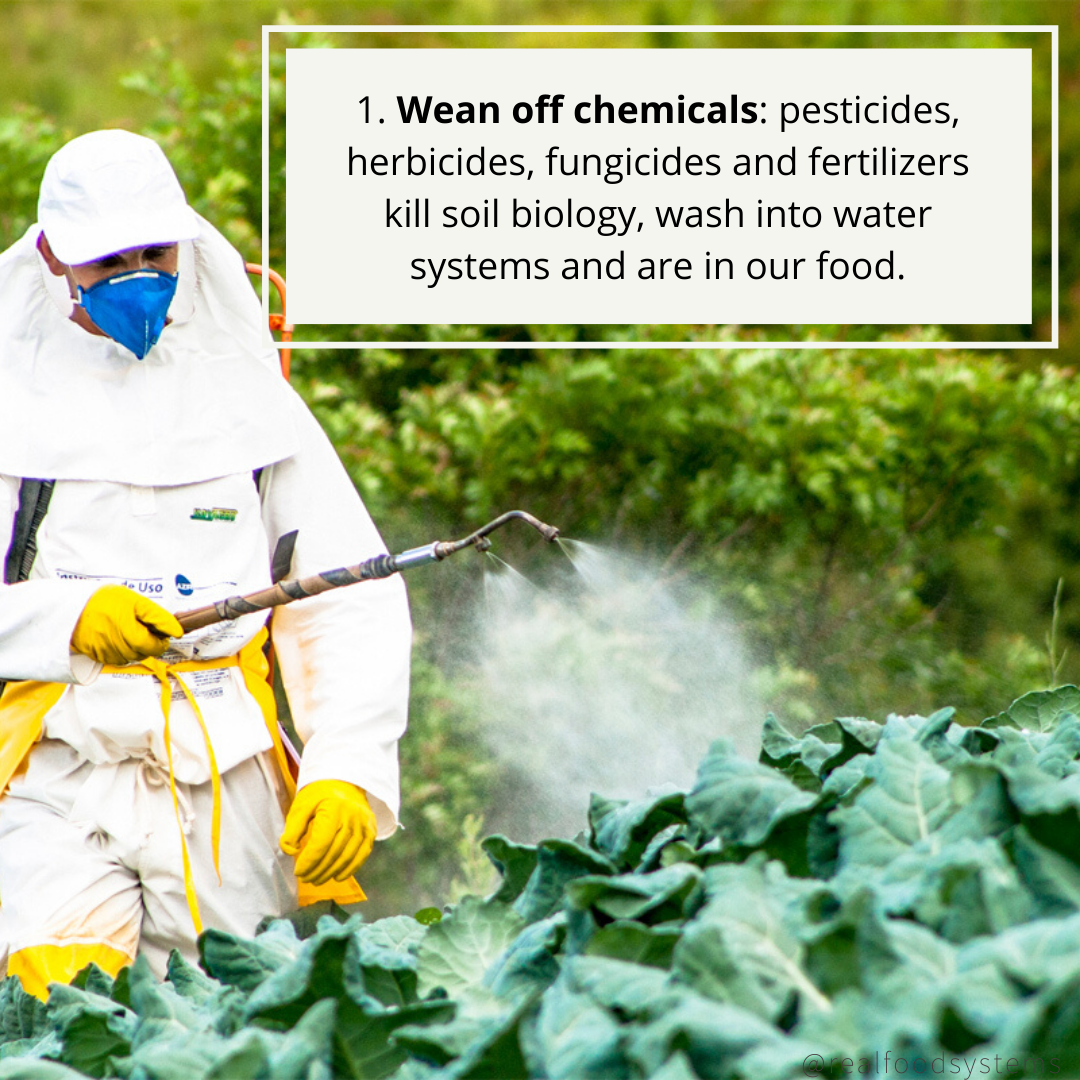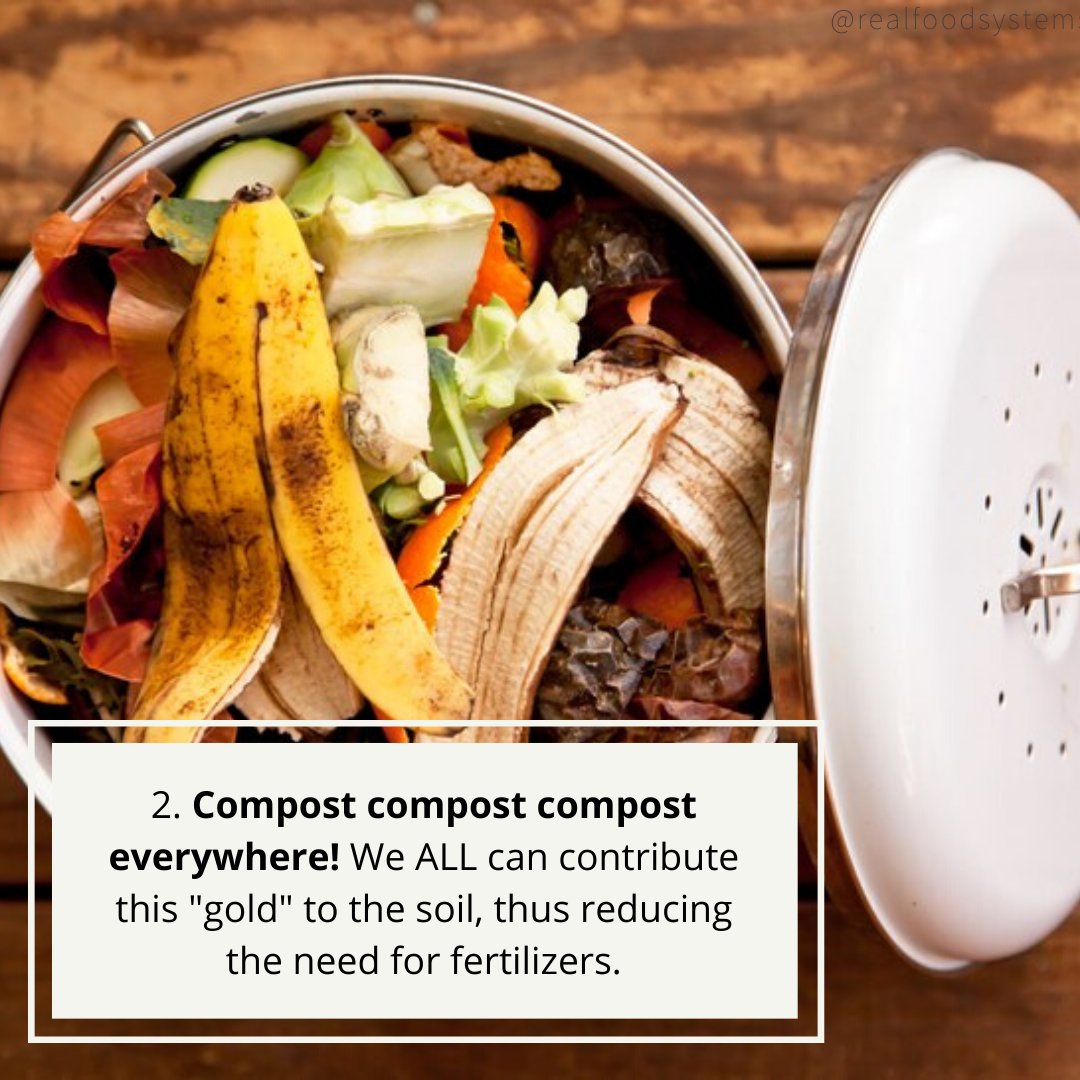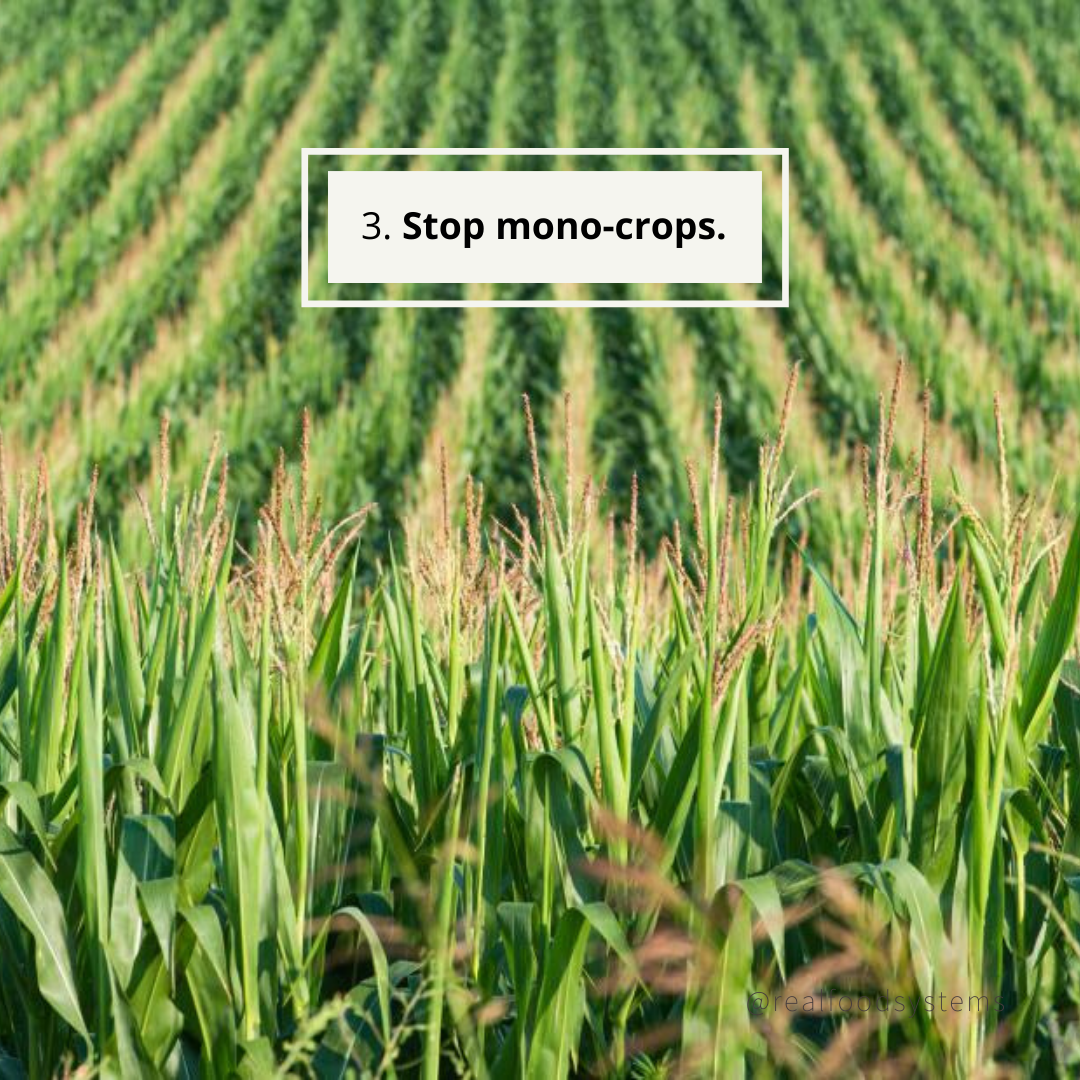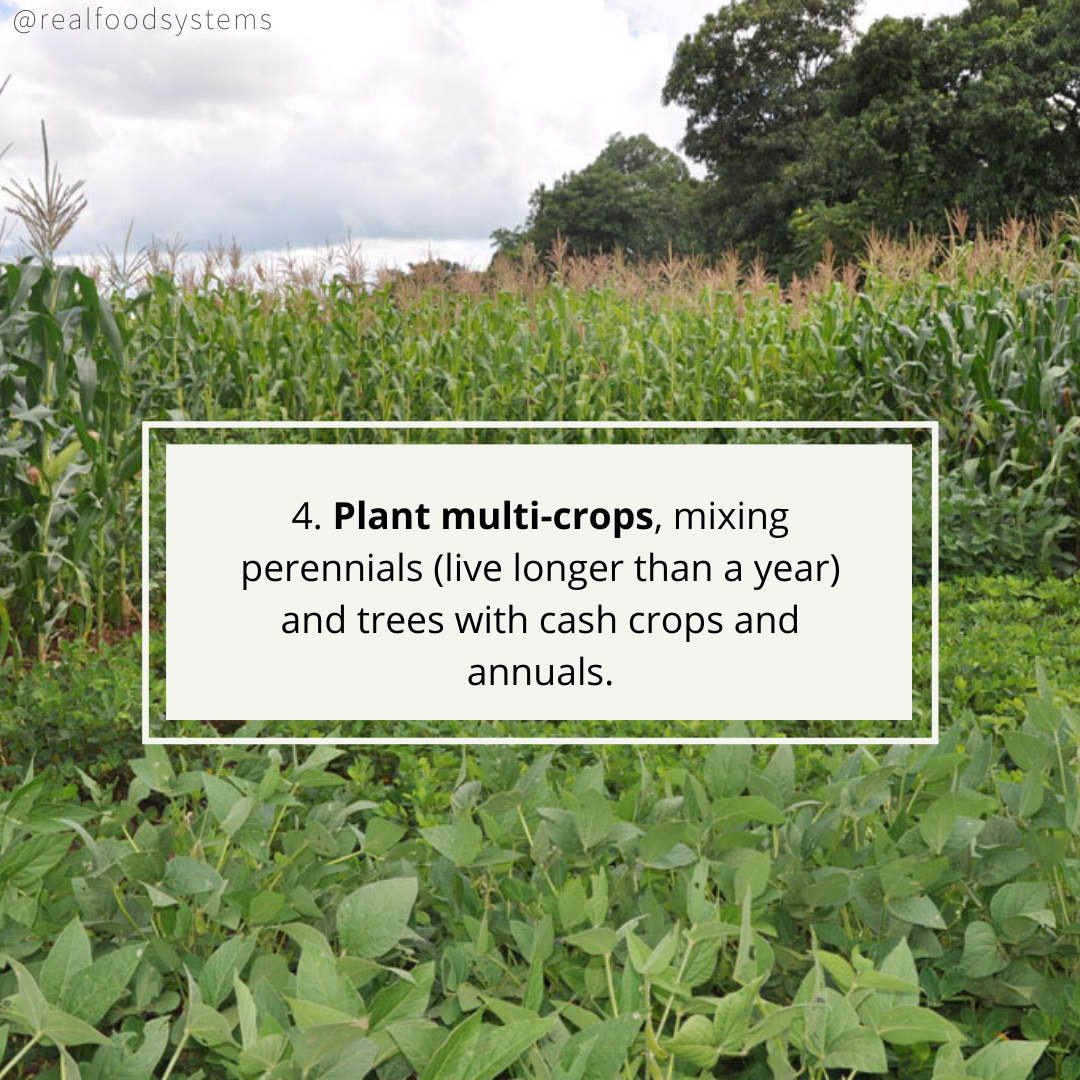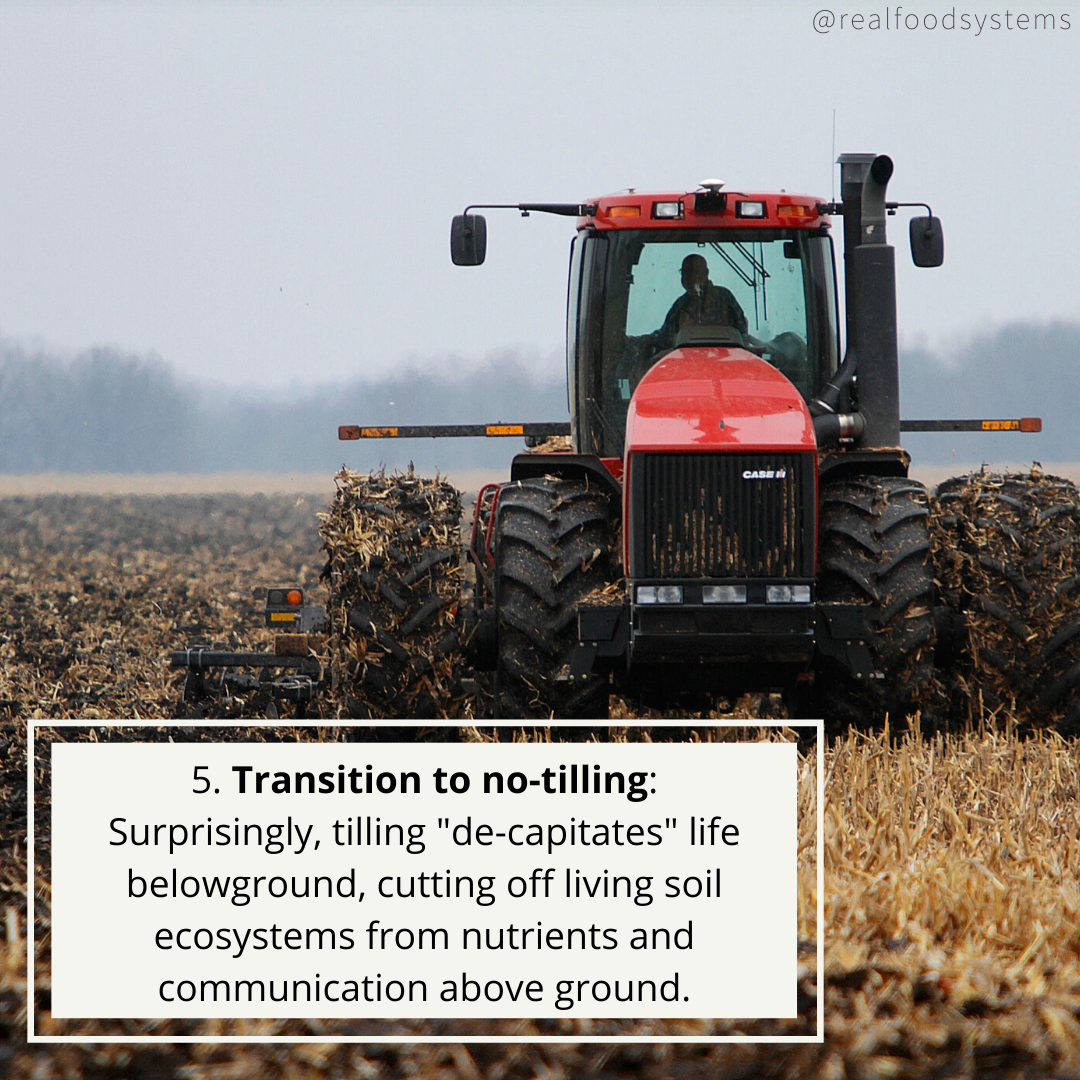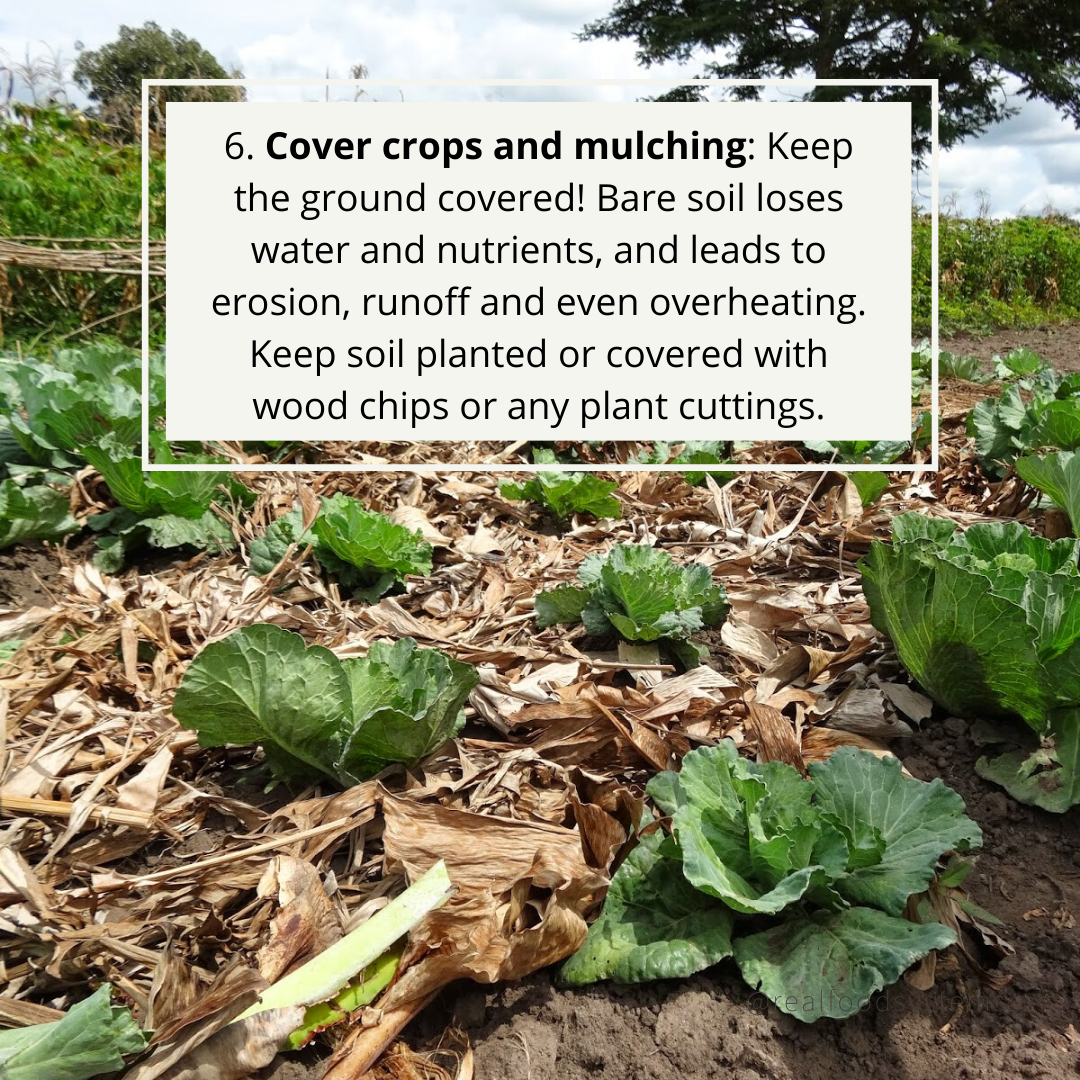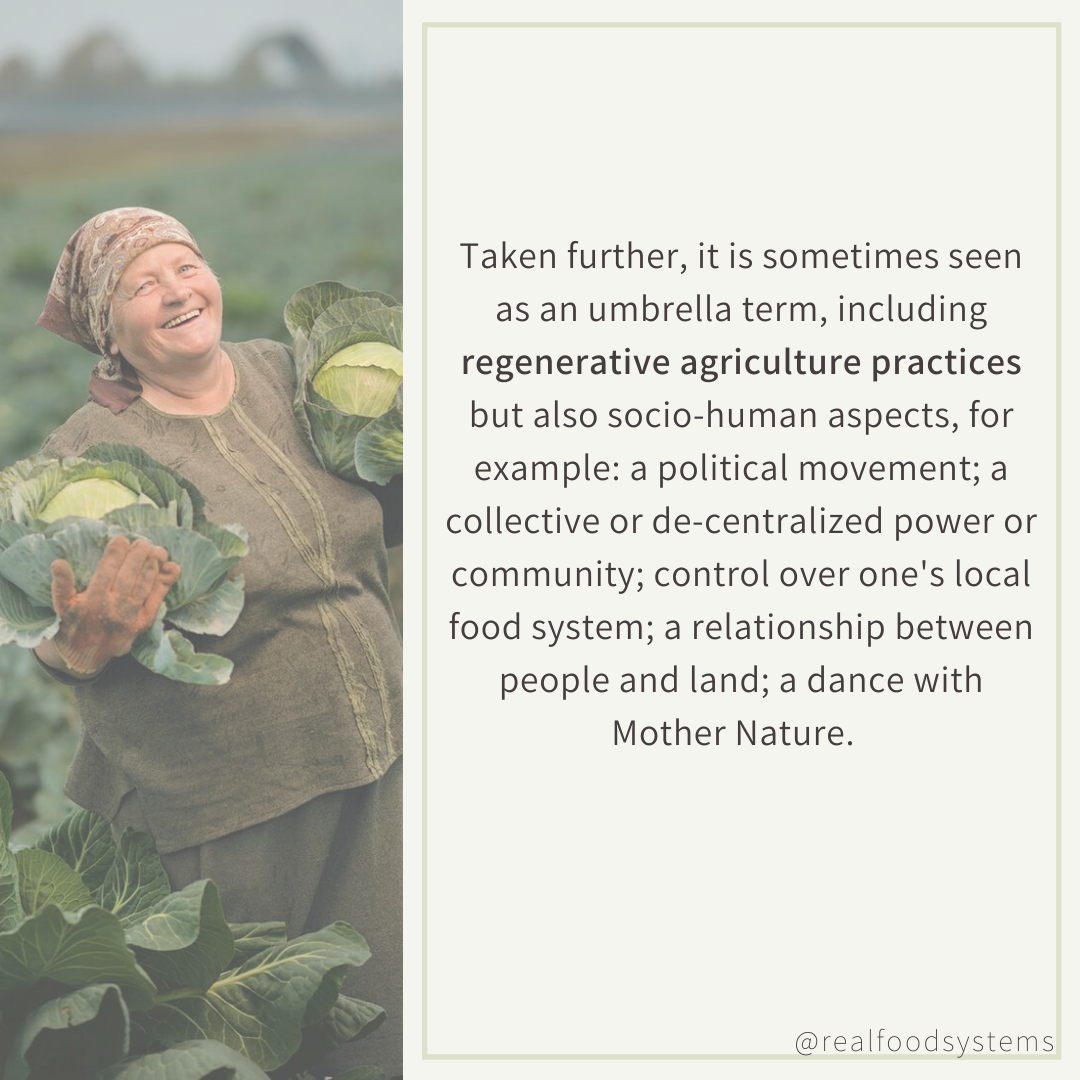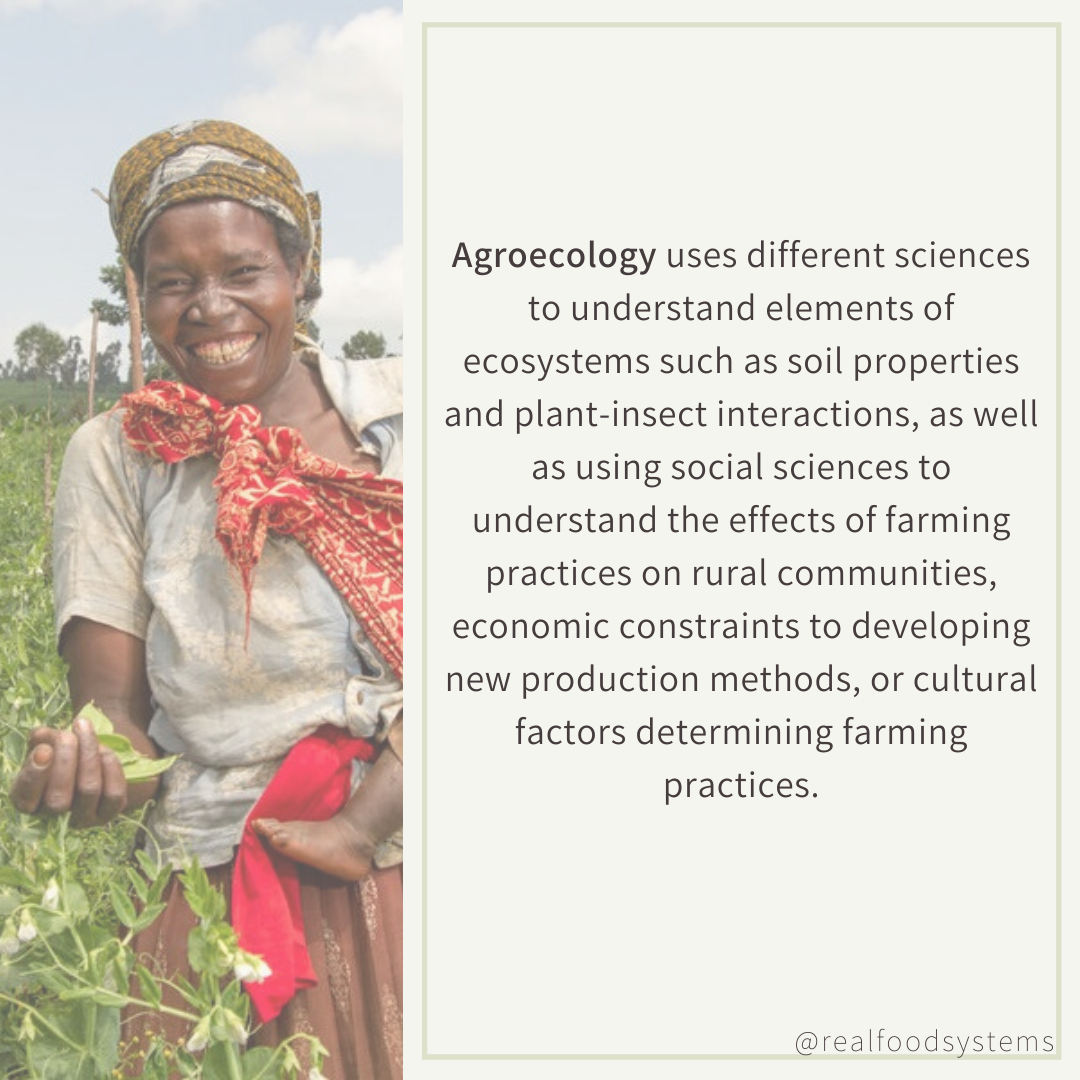REAL FOOD REQUIRES “REAL” HEALTHY SOIL: WHY WE NEED HEALTHY SOILS and an Intro to AGROECOLOGY
Robust Soil is Key to a Healthy Food System
To grow nutritious food we need healthy soil. All life on Earth above ground relies on the intricate network of life below ground. Read on to explore many aspects of this magical underground ecosystem.
Our World's Soils are in Bad Shape!
The UN FAO in 2018 estimated that 1/3 of the world's farmable land has been severely degraded, leading to desertification in many places The way we farm, especially in industrial farming over the past about 50 years, is contributing greatly to this. Methods used in industrial farming post-WWII, such as monocrops, tilling vast areas, and using more and more chemical inputs (fertilizers, pesticides, fungicides etc), have become normal in many places. These degenerative and extractive methods are resulting in less and less soil organic matter (more about soil organic matter following!), and an increasing reliance on chemicals to produce food. The result: dying soil, contaminated ecological systems, and chemicals in our food.
What is Soil Organic Matter (SOM) and Why is it
Important?
To understand healthy soil's organic matter, we have to look at plants' photosynthesis: plants take CO2 from the air, combine it with sunlight and water and create food (carbohydrates/ sugars) to grow. Some of this food is sent down through plants' roots to "feed" the microbiome below, in exchange for minerals and other nutrients given to the plants. This magical interaction belowground results in healthy plants, lots of life (organic matter) in the soil, and carbon sequestration (from air to soil) as a bonus! It's a win-win-win situation.
Factoids: There are more organisms in a teaspoon of healthy soil than all people on our planet! Soil organic matter is about 50% carbon.
How Do We Regenerate Ecosystems and Also Grow
Nutritious Food?
Keep reading to learn about what we need to do to fix our degenerative land stewardship.
URGENT ACTION: STOP DEFORESTATION!!!!!!!!!
The rate of deforestation is shocking. The UN FAO states that about half of the world's tropical forests have been cleared or degraded. Deforestation in general results from clearing forests for agriculture and especially for livestock. In fact, 67% of deforestation from agriculture is for animal feed (especially soy, corn) and grazing lands.
To illustrate further, The World Bank in 2004 reported that in the Brazilian Amazon, cattle ranching has fuelled up to 91% of deforestation since 1970. One of the main crops grown is soybeans for animal feed. This has gotten much worse in recent years.
Factoid: only about 3% of soy grown is eaten by humans; most is grown for animal feed.
URGENT ACTION: REFOREST AND AFFOREST!
We need to fix degraded lands with reforesting, and also add trees to shrinking forests.
AND WHAT ACTIONS CAN WE EACH DO?
First: Think about what you eat and how it could impact (negatively or positively) this problem. Focus on a plant-based, whole-food diet; reduce animal-based (and industrially fished or farmed fish) foods and food with palm oil, since much deforestation is also due to industrial oil palm crops.
Second: Plant trees, gardens and compost at home and in your community. Have fun with family and friends! Get outside!
Third: Get involved in a tree-planting organization, or donate to one. There are many!
Fourth: Act civically: Sign petitions to STOP deforestation and to START to fund large foresting projects. Urge your local government or school to plant trees, and to provide community composting and interactive teaching gardens.
AGRICULTURE SOLUTIONS
To heal our soils and to have healthy food, we must fix the way we grow food (our agricultural systems).
Farmers are on the front lines of climate change and often cannot make a living. There are solutions at hand, often tried-and-true or indigenous ways from before industrial agriculture before we put vast quantities of chemicals in our soils. We have a long way to go to heal our dying soils, and we must help our farmers (with subsidies) to transition.
URGENT ACTION: END industrial animal agriculture
This common way of producing cheap meat and dairy products horribly impacts not only soils but also human health, it emits enormous quantities of greenhouse gases (GHGs) causing global warming, and it destroys our natural environment. Specifically, industrial animal food results in: deforestation, pollution of waterways, groundwater and soils (from chemicals and concentrated animal effluent), ecological genocide, GHGs (CO2 and also huge quantities of methane and nitrous oxide), financial hardships to farmers, and non-communicable human diseases such as cancer, cardiovascular disease and diabetes. This must end. We can absolutely grow healthy food and heal our soils at the same time.
URGENT ACTION: TRANSFORM INDUSTRIAL DEGENERATIVE, EXTRACTIVE AGRICULTURE TO AGROECOLOGY*
A Better System of Agriculture
Successful, soil regenerating practices vary hugely by location and season and culture, however, a fundamental principle is to keep the soil covered at all times: simple! This shift is gaining momentum, but we need to ignite transformation on a massive scale, especially by demanding that governments help struggling farmers, by redirecting subsidies to heal soils and produce healthy food.
(*Keep reading for a definition and discussion on Agroecology) Specifically, we need to:
(By the way, you can use many of these techniques in your home garden!)
1. Wean off chemicals: pesticides, herbicides, fungicides and fertilizers kill soil biology, wash into water systems and are in our food.
2. Compost compost compost everywhere! We ALL can create this "gold" of the soil, reducing the need for fertilizers.
3. Stop mono-crops.
4. Plant multi-crops, mixing perennials (live longer than a year) and trees with cash crops and annuals.
5. Transition to no-tilling: Surprisingly, tilling "de-capitates" life below ground, cutting off living soil ecosystems from nutrients and communication above ground.
6. Cover crops and mulching: Keep the ground covered! Bare soil loses water and nutrients and leads to erosion, runoff and even overheating. Keep soil planted or covered with wood chips or any plant cuttings.
7. Where grazing animals exist in small local farms, integrate animals in tree-planted areas (silvopasture).
WHY ARE THESE METHODS SO IMPORTANT?
SUPERHEROES of the underground world!
There is an entire microbiome/ecosystem underground. Healthy soil has a lot of organic matter (roughly 7% or a bit more in a healthy soil aggregate) which is composed of carbon, bacteria, fungi and other microscopic organisms. In this organic matter are "Super Heros": Mycorrhizal Fungi. These amazing fungi get their food (carbon sugars) from plant roots, and in exchange, they bring nutrients and minerals (that plants cannot process themselves) to the plant roots from many sources in the soil and underground rocks. At least 80% of plants have this symbiotic relationship with these fungi.
In fact, to make that connection work so well, the fungi have groupings of tiny filaments (called mycelium, as shown larger here, magnified) composed of individual finger-threads (hyphae) which touch and wrap onto or into plant roots. Factoid: The hyphae have a sticky protein covering, glomalin (only discovered in 1996!), which is vital in maintaining that physical bond.
Here is the bonus: the root-fungi bond is not only an avenue for nutrient exchange, but it enables carbon sequestration underground AND serves as an information highway ("world wood web") where trees and plants can "signal" each other underground (via the fungi's roadway). For example, when one tree is being attacked by pests or diseases it sends signals down through the roots and via the fungi-road to nearby trees. Then, the underground system helps neighbouring trees produce chemicals to repel these pests. It's an underground world that scientists are only beginning to understand!
So, a healthy soil system harbours nutrients, stores carbon, and all players below and above ground can help each other survive and thrive. You can see WHY it is critical to maintain and feed this underground ecosystem, for plants and trees to stay healthy and resilient, AND to pull down CO2 from the atmosphere.
Tilling and chemicals literally decapitate and kill the entire system!
TO HELP THESE SOIL HEROS, IN FARMING WE MUST:
-- STOP TILLING
-- STOP CHEMICAL INPUTS
-- STOP MONOCULTURE CROPS
-- DO COVER CROPS AND MULCHING
-- DO MULTI-CROPPING WITH TREES AND PERENNIALS
HAVE YOU HEARD OF "AGROECOLOGY"?
This seems to be a buzzword in agriculture. What is it?
The OECD definition of agroecology: "the study of the relation of agricultural crops and environment." But Agroecology involves much more than that. Agroecology uses different sciences to understand elements of ecosystems such as soil properties and plant insect interactions, as well as using social sciences to understand the effects of farming practices on rural communities, economic constraints to developing new production methods, or cultural factors determining farming practices.
Taken further, it is sometimes seen as an umbrella term, including regenerative agriculture practices but also socio-human aspects, for example: a political movement; a collective or de-centralized power or community; control over one's local food system; a relationship between people and land; a dance with Mother Nature. Also and important to remember: every place, year and season are different, so agroecology is a fluid, moving method of working WITH nature, not against it. Nature, as a system, is constantly evolving, and we can do so much better by mimicking her in growing our food.
